#House Petrović-Njegoš
Explore tagged Tumblr posts
Text

Princess Zorka Karađorđević (23 December [O.S. 11 December] 1864 – 16 March [O.S. 4 March] 1890), born Princess Ljubica of Montenegro, was the eldest child of Prince Nicholas I and Princess Milena of Montenegro, who later became the country's king and queen consort. In 1883, Ljubica married Prince Peter Karađorđević and she changed her name to Zorka (and her surname to Karađorđević). She died in childbirth while giving birth to Prince Andrija on 16 March 1890. Prince Andrija died shortly thereafter. Zorka's husband later became king of Serbia as Peter I.
#Zorka of Montenegro#House Petrović-Njegoš#xix century#women in history#photo#photography#black and white
3 notes
·
View notes
Text

Elena of Savoy, Queen of Italy. By Tancredi Scarpelli.
#tancredi scarpelli#kingdom of italy#kingdom of montenegro#house of savoy#Elena del Montenegro#regina d'italia#Regina consorte d'Italia#queen consort#principessa del Montenegro#Књажевина Црна Гора#Petrović Njegoš#Casato dei Petrović-Njegoš#regno d'italia#royalty
0 notes
Text
Day 10 - Zabljak>Cetinje
It's a lovely sunny day, but still so cold! I'm happy I'm moving to someplace warmer today.

Last time in Podgorica! (Only to change buses, but still). I will miss you strange small capital <3
The hills/mountains on the way to Cetinje remind me of the northern part of Sardinia.

My arrival in Cetinje is not in the best of circumstances: I'm hungry, I have to pee, the place I'm staying is much further from the bus station than I thought and it's also all uphill D: Google maps brings me to a road that is CURRENTLY UNDER RENOVATIONS, and I can't find an entrance to get to the location.

A lady outside a shop sees me looking around with my luggage and signs me to go back and turn around; she is right, and I finally find my hostel, which is not as welcoming on first impression as I would have liked (the host is very nice though, he doesn't speak English but he translates everything with his phone). After a moment of deep despair (I'm also premestrual, yay) I go outside to find something to eat and make the most of this sunny afternoon that is the only time I have in Cetinje (well, I also have tomorrow morning but after seeing how far the hostel is from the center and the bus station I don't think I'll be going back and forth tomorrow).





And well, I'm actually so glad I decided to come here! Cetinje used to be the capital of Montenegro before Podgorica, and while very small it has that vibe of a place that used to be central. There's also something about it that reminds me of the difference between Bucharest and Timisoara in Romania, between a place that has been rebuilt in the 20th century and a place that kept its historical roots (though for very different reasons).

At the Biljarda (a museum dedicated to king Petar II Petrović Njegoš) there's a giant tridimensional map of Montenegro! It was built for strategic/invasion reasons, but it's an incredible reproduction in bronze of the country, the only one at the scale of 1:10000.
Sadly museums and shops close at 5, but there's a beautiful park and it's warm enough that reading on a bench is pleasant.

Sometimes I forget how coffee-biased Italy is. Coffee (espresso at least) is cheaper than in almost any other European country, but tea is ridiculously expensive by comparison. So I generally just don't drink tea outside of my house, because it makes me mad to pay so much for something I can do myself, using better tea. So here I was, not really knowing what to do before I get dinner, a bit cold now that the sun is setting... and I decided to "splurge" on a cup of tea. Only of course it wasn't splurging. It was the same price of coffee, or maybe just a tiny bit more!
I have dinner in a tiny place, good food and inexpensive; I might come back tomorrow for lunch before leaving!
#cetinje#montenegro#crna gora#travel#photography#i just want a tag for the things i personally put out into the worl#mag travels from time to time#maddalena>montenegro#my photography#i just want a tag for the things i personally put out into the world
2 notes
·
View notes
Text
0 notes
Photo

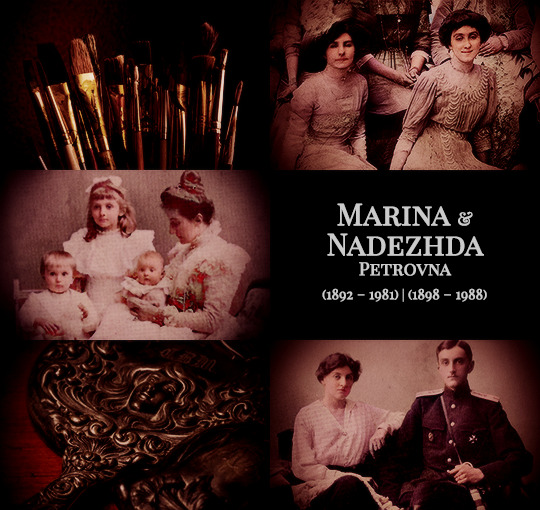
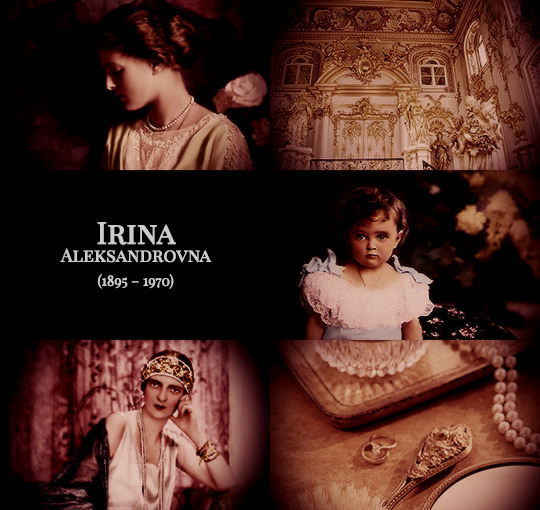
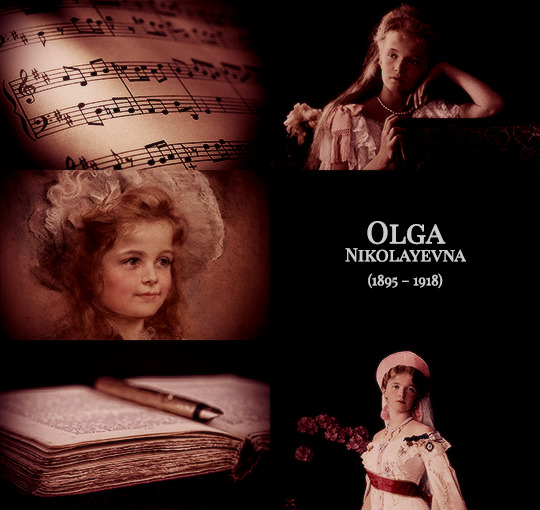

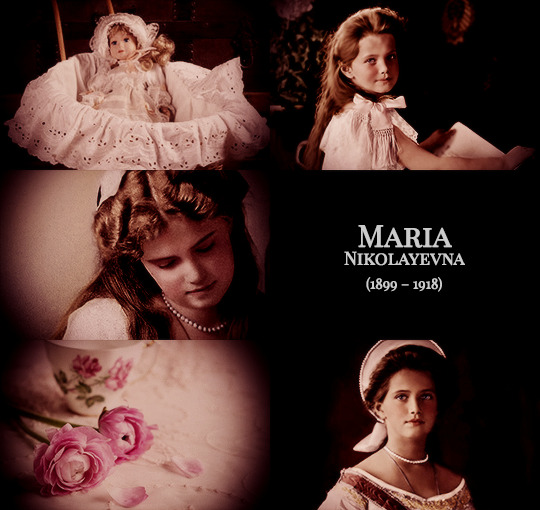


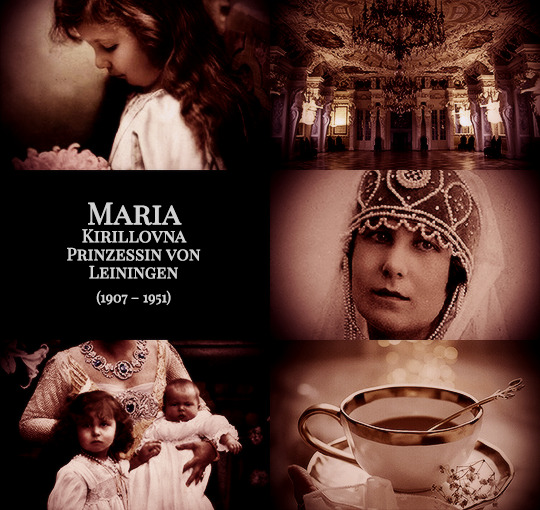
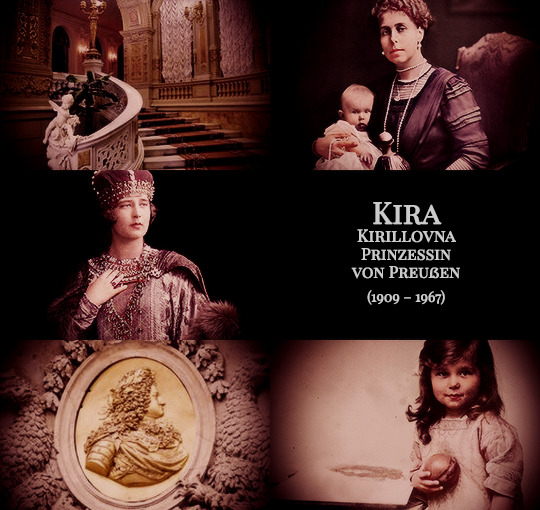
Women of the House of Romanov, part IV
Princesses Tatiana and Vera Konstantinovna: Daughters of Grand Duke Konstantin and Elisabeth von Sachsen-Altenburg. Mother of Natalia Bagration of Mukhrani.
Princesses Marina and Nadezhda Petrovna: Daughters of Grand Duke Pytor Nikolayevich and Milica Petrović-Njegoš of Montenegro.
Princess Irina Aleksandrovna: Daughter of Grand Duke Aleksandr Mikhailovich and Grand Duchess Kseniya Aleksandrovna. Mother of Princess Irina Feliksovna Yusupova.
Grand Duchess Olga Nikolayevna: Daughter of Tsar Nikolai II and Alix von Hessen-Darmstadt.
Grand Duchess Tatiana Nikolayevna: Daughter of Tsar Nikolai II and Alix von Hessen-Darmstadt.
Grand Duchess Maria Nikolayevna: Daughter of Tsar Nikolai II and Alix von Hessen-Darmstadt.
Grand Duchess Anastasia Nikolayevna: Daughter of Tsar Nikolai II and Alix von Hessen-Darmstadt.
Princesses Nina and Kseniya Georgievna: Daughters of Grand Duke Georgy Mikhailovich of Russia and Maria of Greece and Denmark.
Grand Duchess Maria Kirillovna: Daughter of Grand Duke Kirill Vladimirovich and Victoria Melita of Saxe-Coburg and Gotha. Mother of Kira zu Leiningen, Margarita zu Leiningen, and Mechtilde zu Leiningen.
Grand Duchess Kira Kirillovna: Daughter of Grand Duke Kirill Vladimirovich and Victoria Melita of Saxe-Coburg and Gotha. Mother of Marie-Cécilie von Preußen, Kira von Preußen, and Xenia von Preußen.
#historyedit#house of romanov#russian history#european history#women's history#history#19th and early 20th#royalty aesthetic#nanshe's graphics
208 notes
·
View notes
Text


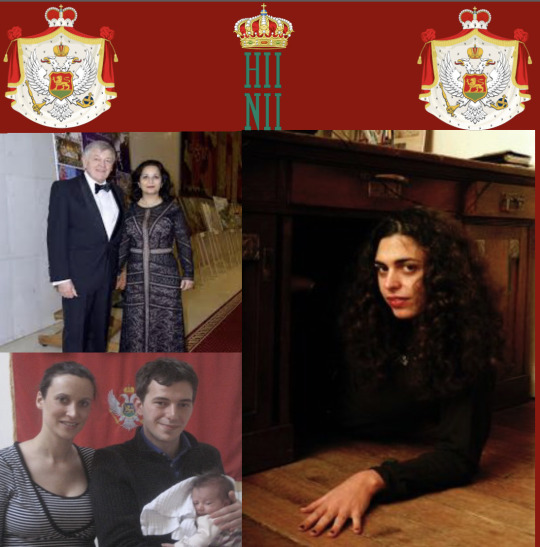



The position and role of the Royal Families of the Balkan States in their states Today
Part 4 Monte Negro
Crown Prince Nicholas of Montenegro born 7 July 1944 is the Head of the House of Petrović-Njegoš, which reigned over Montenegro from 1696 to 1766 and again from 1782 to 1918
Prince Nicholas succeeded as head of the House of Petrović-Njegoš on the death of his father in 1986 and grew closer to his Montenegrin heritage. In 1989 he received an official invitation to come to Montenegro for the reburial and state funeral of his great grandparents King Nicholas I of Montenegro and Queen Milena and their two daughters, Princess Vera and Princess Xenia.Prince Nicholas accompanied the remains on an Italian battleship and his family received an enthusiastic welcome from Montenegrians
During the breakup of Yugoslavia Prince Nicholas made several statements calling on Montenegrians to not get caught up in the violence
Nikola was an active participant in the campaign for the restoration of Montenegro's independence, preceding the referendum on the separation of the former kingdom from the provisional State Union of Serbia and Montenegro.
Prince Nikola made public pronouncements of his willingness to return to the Montenegrin throne if that were the wish of the people. In July 2010, the government of Montenegro made a formal offer to provide Nikola with a €3,000 monthly stipend (equal to that of the President), granting his family with an annual €300,000 civil list, a formal residence in Cetinje and the return of the Petrović Njegoš historic family home in Njeguši. This offer was rejected because Nikola believed that the proposal did not deal adequately with the issue of property compensation, as more than thirty properties were alleged to have been confiscated from the dynasty after the monarchy was overthrown.
Furthermore, he believed that the bill would prevent the dynasty from participating in political life and restrict the ability of members of the dynasty to speak freely about certain subjects. He also said that the civil list amount that was announced in the press was not actually contained in the proposed version of the bill that he was shown.
Owing to his stance on this bill, Nikola chose not to attend the celebrations of the centenary of the Kingdom of Montenegro that were held on 28 August 2010. Instead, he celebrated in private.
Legislation passed later in 2011 revised the conditions offered to the prince, and was accepted by Prince Nikola on behalf of his family, who said he was now "entirely satisfied". In addition to aspects of the previous offer, Nikola was given use of the first floor of the Podgorica Royal Palace witch is the royal winter residence in Podgorica, Montenegro. The palace was constructed by King Nikola I Petrović-Njegoš in 1889.
Podgorica Royal Palace
The palace is today the seat of the Petrovich Njegosh Foundation which is presided over by Nicholas, Crown Prince of Montenegro.palace and named as a special representative for the government of Montenegro.
The Montenegrin state promised to pay €4.3 million in compensation for lost assets to a family fund, and pay Crown Prince Nikola a monthly salary equal to that of the president.
Today Crown Prince Nikola,actually represents the country in diplomatic functions and even possesses some political authority, but has not been restored to his family’s historical throne.
The Montenegrin flag was introduced on 12 July 2004 by the country's Parliament. It consists of the nation of Montenegro. The banner is red and has a double-headed eagle in the center.
The coat of arms of Montenegro comes from that of King Nikolaos A. The Cyrillic initials NI (ie NI) of King Nicholas I do not exist in the current flag.
Η θέση και ο ρόλος των Βασιλικών Οικογενειών των Βαλκανικών Κρατών στα κράτη τους Σήμερα
Μέρος 4ο Μαυροβούνιο
Ο διάδοχος του Μαυροβουνίου Νικόλαος, γεννημένος στις 7 Ιουλίου 1944, είναι ο αρχηγός του Οίκου Petrović-Njegoš, ο οποίος βασίλεψε στο Μαυροβούνιο από το 1696 έως το 1766 και ξανά από το 1782 έως το 1918
Ο πρίγκιπας Νικόλαος διαδέχθηκε ως επικεφαλής του Οίκου Petrović-Njegoš μετά τον θάνατο του πατέρα του το 1986 και πλησίασε περισσότερο την κληρονομιά του στο Μαυροβούνιο. Το 1989 έλαβε επίσημη πρόσκληση να έρθει στο Μαυροβούνιο για την επαναταφή και την κρατική κηδεία του προπάππου και της γιαγιάς του, του βασιλιά Νικολάου Α' του Μαυροβουνίου και της βασίλισσας Μιλένας και των δύο κορών τους, της πριγκίπισσας Βέρα και της πριγκίπισσας Ξένιας. Ο πρίγκιπας Νικόλαος συνόδευσε τα λείψανα σε ένα ιταλικό θωρηκτό και Η οικογένειά του έτυχε ενθουσιώδους υποδοχής από τους Μαυροβούνιους
Κατά τη διάλυση της Γιουγκοσλαβίας, ο πρίγκιπας Νικόλαος έκανε αρκετές δηλώσεις καλώντας τους Μαυροβούνιους να μην παγιδευτούν στη βία
Ο Νικόλα συμμετείχε ενεργά στην εκστρατεία για την αποκατάσταση της ανεξαρτησίας του Μαυροβουνίου, πριν από το δημοψήφισμα για τον διαχωρισμό του πρώην βασιλείου από την προσωρινή Ένωση Κρατών της Σερβίας και του Μαυροβουνίου.
Ο πρίγκιπας Νικόλα έκανε δημόσιες δηλώσεις για την προθυμία του να επιστρέψει στον θρόνο του Μαυροβουνίου, εάν αυτή ήταν η επιθυμία του λαού. Τον Ιούλιο του 2010, η κυβέρνηση του Μαυροβουνίου έκανε επίσημη προσφορά να παράσχει στον Νικόλα μηνιαίο επίδομα 3.000 ευρώ (ίσο με αυτό του Προέδρου), χορηγώντας στην οικογένειά του ετήσια Βασιλικη Χορηγία 300.000 ευρώ, επίσημη κατοικία στο Τσετίνιε και την επιστροφή του το ιστορικό σπίτι της οικογένειας Petrović Njegoš στο Njeguši. Αυτή η προσφορά απορρίφθηκε επειδή ο Νικόλα πίστευε ότι η πρόταση δεν αντιμετώπι��ε επαρκώς το ζήτημα της αποζημίωσης περιουσίας, καθώς περισσότερες από τριάντα ιδιοκτησίες φέρεται να είχαν κατασχεθεί από τη δυναστεία μετά την ανατροπή της μοναρχίας. Επιπλέον, πίστευε ότι το νομοσχέδιο θα εμπόδιζε τη δυναστεία να συμμετέχει στην πολιτική ζωή και θα περιόριζε την ικανότητα των μελών της δυναστείας να μιλούν ελεύθερα για ορισμένα θέματα. Είπε επίσης ότι το ποσό της Βασιλικης Χορηγίας που ανακοινώθηκε στον Τύπο δεν περιλαμβανόταν στην προτεινόμενη έκδοση του νομοσχεδίου που του επιδείχθηκε.
Λόγω της στάσης του σχετικά με αυτό το νομοσχέδιο, ο Νικόλα επέλεξε να μην παραστεί στους εορτασμούς της εκατονταετηρίδας του Βασιλείου του Μαυροβουνίου που πραγματοποιήθηκαν στις 28 Αυγούστου 2010. Αντίθετα, γιόρτασε κατ' ιδίαν.
Η νομοθεσία που ψηφίστηκε αργότερα το 2011 αναθεώρησε τους όρους που προσφέρθηκαν στον πρίγκιπα και έγινε δεκτός από τον πρίγκιπα Νικόλα εκ μέρους της οικογένειάς του, ο οποίος είπε ότι τώρα ήταν "απόλυτα ικανοποιημένος". Εκτός από τις πτυχές της προηγούμενης προσφοράς, ο Nοκολαος χρησιμοποίησε τον πρώτο όροφο του Βασιλικού Παλατιού της Ποντγκόριτσα που είναι η βασιλική χειμερινή κατοικία στην Ποντγκόριτσα του Μαυροβουνίου. Το παλάτι κατασκευάστηκε από τον βασιλιά Nikola I Petrović-Njegoš το 1889.
Βασιλικό Παλάτι της Ποντγκόριτσα
Το παλάτι είναι σήμερα η έδρα του Ιδρύματος Petrovich Njegosh, του οποίου προεδρεύει ο Nικολαος, διάδοχος του Μαυροβουνίου και ονομάζεται ειδικός εκπρόσωπος της κυβέρνησης του Μαυροβουνίου.
Το κράτος του Μαυροβουνίου υποσχέθηκε να καταβάλει 4,3 εκατομμύρια ευρώ ως αποζημίωση για χαμένα περιουσιακά στοιχεία σε ένα οικογενειακό ταμείο και να καταβάλει στον Πρίγκιπα διάδοχο Νικόλα μηνιαίο μισθό ίσο με αυτόν του προέδρου.
Σήμερα ο διάδοχος του θρόνου Νικόλα, στην πραγματικότητα εκπροσωπεί τη χώρα σε διπλωματικές λειτουργίες και μάλιστα κατέχει κάποια πολιτική εξουσία, αλλά δεν έχει αποκατασταθεί στον ιστορικό θρόνο της οικογένειάς του.
Η σημαία του Μαυροβουνίου καθιερώθηκε στις 12 Ιουλίου 2004 από το Κοινοβούλιο της χώρας. Αποτελείται από το εθνόσημο του Μαυροβουνίου. Το πανό είναι κόκκινο και έχει στο κέντρο του έναν δικέφαλο αετό.
Το εθνόσημο του Μαυροβουνίου προέρχεται από αυτό του Βασιλέα Νικολάου Α΄. Τα κυριλλικά αρχικά НІ (δηλ. NI) του Βασιλέα Νικολάου Α΄ δεν υπάρχουν στη σημερινή σημαία.
#kingconstantine#danishroyalfamily#crownprincepavlos#queenannemarie#greek royal family#house of romanov#greekroyals#crownprincessmariechantal#danishroyals#princeconstantinealexios#princessmarieolympia#princess theodora#princeachileasandreas#princesseirini#princessalexia#princessnina#princesstatiana#princefilippos#princeodyseaskimon#princearistidesstavros#princenikolaos
6 notes
·
View notes
Video
youtube
My visit to Royal Palace - Castle of King Nikola, XIX century, Bar, Montenegro More videos: https://www.youtube.com/feed/my_videos Bar Royal Palace is a (former) royal summer residence in Bar, Montenegro. The palace was constructed by king Nikola I Petrović-Njegoš in 1885, and was a gift to his daughter Princess Zorka and his son-in-law, Prince Petar Karađorđević. The complex includes the large and the small palace, a chapel, houses for the guards and a winter garden. A spacious ballroom was added in 1910. At the front of the palace, there was a wooden pier. Between 1866 and 1916, King Nikola owned ten yachts. One of them, Sibil, was bought from Jules Verne, the novelist. The last yacht bought was the Rumija. In 1915, it was sunk in the Bar harbour by the Austro-Hungarian navy. Currently, the palace houses the city museum of Bar. Also, it is used as a venue for festivals, concerts, exhibitions and literary events. The main building of the complex is the so-called Great castle. The building was erected in the spirit of the residential buildings of that time. It has a rectangular base with a facade facing the sea. It consists of ground floor, first floor and attic. There were wine cellars in the country on both sides of the Great Castle, and there are still living witnesses to the existence of an underground tunnel that connected the cellar with the watchtowers. Whether these were drainage drains, or a secret passage such as many medieval fortifications have, cannot be said without archaeological research. At the corners of the fence wall of the Great Castle, towards the sea, there is a six-sided watchtower with broken arched windows. The winter garden, a gift from the Italian king Vittorio Emanuel, leans on the northeast side of the palace park. The building is built of glazed metal construction with decorative details in the form of Art Nouveau, and is the only such monument in Montenegro. The premises of the palace are used to host the local museum of local lore, they also hold literary readings, exhibition displays, arrange music concerts and festivals. DAGUE DESTROER EXHIBITION: Dague was one of a dozen Bouclier-class destroyers built for the French Navy in the first decade of the 20th century. During World War I, Dague struck a mine at Bar, Montenegro, on 24 February 1915 and sank with the loss of 38 of her crew. The exhibition presents items from a sunken ship raised from the seabed.
#hello#likes#like#likeme#travel#followme#interesting#subscribe#nicholas#nikola#king#montenegro#bar montenegro#europe#adventures#royaty#traveler#trip#culture#muse update#exhibitionbooth#ship#ships#museums#mountains
2 notes
·
View notes
Text
WELCOME TO MONTENEGRO!

Thank you for joining us on this historic 85th season of Tumblr Survivor!!

Montenegro (/ˌmɒntɪˈneɪɡroʊ, -ˈniːɡroʊ, -ˈnɛɡroʊ/ (listen); Montenegrin: Црна Гора / Crna Gora [tsr̩̂ːnaː ɡɔ̌ra])[a] is a country in Southeast Europe on the Adriatic Sea. It borders Bosnia and Herzegovina to the northwest; Serbia and Kosovo[b] to the east, Albania to the south and Croatia to the west. Montenegro has an area of 13,812 square kilometres and a population of 620,079 (2011 census). Its capital Podgorica is one of the twenty-three municipalities in the country. Cetinje is designated as the Old Royal Capital.

During the Early Medieval period, three principalities were located on the territory of modern-day Montenegro: Duklja, roughly corresponding to the southern half; Travunia, the west; and Rascia proper, the north.[10][11][12] In 1042, archon Stefan Vojislav led a revolt that resulted in the independence of Duklja from the Byzantine Empire and the establishment of the Vojislavljević dynasty. The independent Principality of Zeta emerged in the 14th and 15th centuries, ruled by the House of Balšić between 1356 and 1421, and by the House of Crnojević between 1431 and 1498, when the name Montenegro started being used for the country. After falling under Ottoman rule, Montenegro regained de facto independence in 1697 under the rule of the House of Petrović-Njegoš, first under the theocratic rule of prince-bishops, before being transformed into a secular principality in 1852. Montenegro's de jure independence was recognised by the Great Powers at the Congress of Berlin in 1878, following the Montenegrin–Ottoman War. In 1905, the country became a kingdom. After World War I, it became part of Yugoslavia. Following the breakup of Yugoslavia, the republics of Serbia and Montenegro together established a federation known as the Federal Republic of Yugoslavia, which was renamed to the State Union of Serbia and Montenegroin 2003. On the basis of an independence referendum held in May 2006, Montenegro declared independence and the federation peacefully dissolved on 3 June of that year.

Since 1990, the sovereign state of Montenegro has been governed by the Democratic Party of Socialists and its minor coalition partners. Classified by the World Bank as an upper middle-income country, Montenegro is a member of the UN, NATO, the World Trade Organization, the Organization for Security and Co-operation in Europe, the Council of Europe, and the Central European Free Trade Agreement. It is a founding member of the Union for the Mediterranean.
THANK YOU WIKIPEDIA!!!
Anyway, it is here that 12 returning players and 8 new players will battle for the title of Sole Survivor! Over the next 45-ish days, they will be tested in ways they never had before, finding the balance between keeping things hidden, and bringing them into the light for everyone to see. They will make alliances and betray them, make friends and compete for power. In the end, most of them will be voted off, paving the way for those strong enough to thrive.
They have been split into two tribes: Budva, which will wear red, and Durmitor, which will always wear green.

Ali, Benj, Ian, Jared, Jason, Julia, Madeleine, Michael, Mitch, and Noah.

Alex, Caeleb, David, Evan, JJ, Jones, Jules, Mo, Tom, Willow
0 notes
Photo

Prince Nikola II
My name is Nikola II Petrović-Njegoš. I am the crown prince of Montenegro. I was born in Bretagne, France and I lived in France almost all my life. I studied architecture there and became an architect. From the beginning I was very interested in the environment. I made my first house with solar 50 years ago, before it became popular. I came back to Montenegro in 1989 when I was able to return. My great-great-grandfather was buried in Italy under the authority of Yugoslavia. They wanted to return him to Montenegro and needed my authorization to do it. I was so surprised when I arrived in Montenegro to see how the people in Montenegro were happy in this small town where we were this morning. 10,000 people live here and there were 200,000 people coming to see the return of the king. It was one month after the Berlin Wall falling and for me it was something very extraordinary - this connection between the two events. I wondered how I could return to Montenegro and I proposed to the government to make a biennial of contemporary art in the city. I thought it would be a good idea to make a place where artists from east and west could get together to make confrontational art. I made the first biennial but a war began after the opening in Yugoslavia so it was a little complicated. During the war I continued with my non-violent resistance - a cultural message to society. We made a big biennial with many artistic interventions against the war. After 2002 was my last biennial in Vienna and we invited 150 artists from all over Europe and had many very interesting installations, performances, exhibitions, architectures, workshops etc. After that, the government kept the budget for themselves, so I was not able to make more of these events. I returned to Paris to my job. After the independence of Montenegro in 2006, I began to take action about the situation in Montenegro with the roots of my family. Montenegro is independent now, so we can decide what to do about the dynasty and the property of the dynasty. After six years of discussions about the historical rehabilitation of my family and morale, we tried to make an agreement about the stature of my family in Montenegro. I wanted the old palace of my grandfather for use and they promised to build a new residence with this palace. I named it the green palace because I wanted to make a plan to have it be a completely autonomous house. But after six years nothing happened - I made the plans immediately but they didn’t realize it. Now I have to fight for my place and a place for my family; my children and grandchildren, so they can feel at home in Montenegro.
Q: You said the first house you built was with solar energy?
Nikola: Yes, but not with solar panels. At that time they didn’t exist. At that time it was bioclimatic houses with a wall and glass in front of the wall so you could make a system of air that’s thermodynamic. In the winter and summer it regulates.
Q: What was the moment (or series of moments) in your life that lead you to become passionate about sustainability and the environment?
Nikola: In 1968 I was a student and in Paris there was a big demonstration. I was one of the students at the barricades because at that moment we wanted to change the world with the Berlin wall and all those things. I was very impressed with what happened in California, where the new community tried to live like they wanted to live. At that moment I discovered the book “Small Is Beautiful: A Study of Economics As If People Mattered” by Schumacher, who was an English economist. He made the first ecological theory (economic theory about ecology), and it’s fantastic. When I read Naomi Klein, I remembered Schumacher when he said that all the systems and the change of society/change of democracy, are a huge part of success. My first job as an architect was with a client who was a mathematician and he designed a recharge system so I learned a lot on his team. After that I had to work but didn’t find such good clients. Anyway, I like being an architect, I think it’s a good job - not just a good job, but a good education. You can learn music and it’s good for you even if you don’t play like a professional; architecture is good in the same way. You look around the world differently when you’re an architect - you say: “Why don’t we make something like that? This house might be better like this.” etc. You are always thinking. For example when I am on the train and look out the window, ten hours can pass just looking.
Q: So when you were a student you learned about the environment?
Nikola: Not at school but outside of school I did. At the time we had a big hero in France who did a lot to promote sustainability. He made small drawings and the majority of his drawings were about ecology and sustainability, so he was one of the first people in France to make a plan. We were friends and we made the delta plan together.
Q: What would you like to tell someone who doesn't believe we need to seek sustainable solutions for our environment?
Nikola: We don’t have choice. It’s no longer a choice. We are conscious and one generation earlier had some romantic ideas, but now it’s a reality and we have to find other ways. It’s not only about technical solutions, it’s a concern of all the segments of life now. We have to understand that we don’t need so many things to be happy - you don't 200 pairs of shoes.
Q: You said most of your architectural clients weren’t seeking sustainable buildings - do you still try to infuse your projects with environmental thinking?
Nikola: Architecture is not an object. You design and you put it into the nature. You have to be connected with the environment. It’s the first thing you look at, so you have to think about the landscape. Landscape and architecture go together; you cannot separate them. Now we have to think about a new revolution because the last generation was not at fault, but the new generation has more knowledge now to think about how humanity lives in a town. The town could have 30 million people living together and so the stress begins. We have bad food and we have this very expensive life in the town so we need to use many natural resources.
#green#go green#green culture#green culture forum#montenegro#montenegrin prince#prince nikola#environmetalists#architect#green building#sustainable housing#sustainability#environmental justice
0 notes